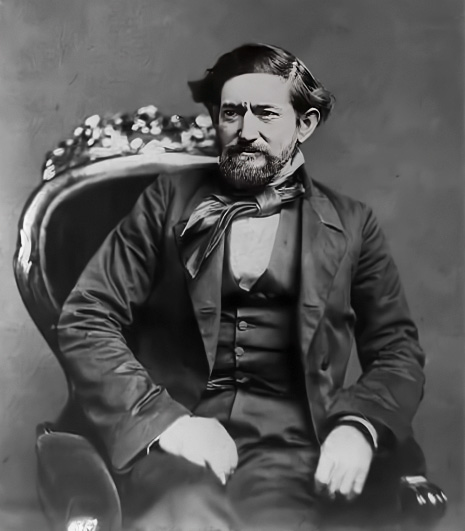Hammond Family Spotlight: John Coffee Hays
John Coffee Hays (1817-1883)
Born January 28, 1817 in Cedar Lick, Tennessee, John Coffee “Jack” Hays, much like his future brother-in-law, Richard, worked as a surveyor, beginning as a teenager. After a few years living with his aunt and uncle in Mississippi following the deaths of his parents, Hays moved to Texas in 1836 and joined the famous Texas Rangers on the recommendation of President Andrew Jackson, Hays’ father having served him in the War of 1812.
Hays quickly earned a strong reputation for himself as a fighter and a leader. By 1840, he had earned the rank of captain. His companies were generally racially diverse, and most often engaged against Native American tribes such as the Comanche as well as Mexican forces. Hays fought in a number of significant battles, including Plum Creek, Bandera Pass, and Walter’s Creek. As with Richard Hammond, he fought with distinction in the Mexican-American War (1846 – 1848).

It has been claimed that Hays was the first man to use both the Colt Paterson five-shot revolver (1836) and the Colt Walker six-shooter (1846). These are difficult facts to verify, but it is true that Hays was a user of both, and contributed to the adoption of both guns for military use, as well as being a possible inspiration for the Colt Walker. Hammond Sr.’s autobiography tells a fanciful tale of his uncle using an early version of the six-shooter to single-handedly fend off an attack by Native Americans upon him at a site called “Enchanted Rock” in 1844.
When John Hays Hammond Sr. was born in 1855, he was named in honor of his uncle, a tradition that was later extended by him to his own son, John Hays Hammond Jr., and his surname served as the middle name of both Harris and even Natalie as well.

In 1867, Hammond Sr.’s mother passed away, and he was sent to a boarding school in Oakland, California. As it happened, his mother’s brother, Colonel Hays, was one of the city’s earliest residents. The engineer recalled that in his boyhood on almost every Friday, he trekked the three miles from Oakland to his uncle’s ranch to spend the weekend there. These trips would prove tremendously influential to the boy. “The stories Uncle Jack told us were better than a whole library of books of adventure,” he wrote in his autobiography. Hays taught Hammond and his brothers how to survive in the wilderness, where the campfire tales told by his uncle and his friends would inspire the lad to undertake his own adventures.
After the Mexican-American War, Hays settled in San Francisco, becoming its sheriff. At the inauguration of President Franklin Pierce in 1853, both Hays and Richard Pindell Hammond, not yet acquainted, independently attended. The general-turned-president appointed Hays as surveyor general of California, and Hammond as collector of customs in San Francisco. Hammond Sr. credited the latter appointment as a reward for his father’s kindness and encouragement to Pierce during their service during the Mexican-American War.
Eventually, Hays retired to his ranch, but was apparently called back into action by a group of other settlers in Nevada against raiding members of the Paiute Tribe, which he provided to success. In 1876, he was a delegate to the Democratic national convention.
Hays died on April 21, 1883. Hays County in Texas is named for him.

